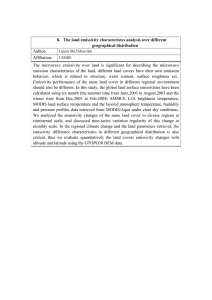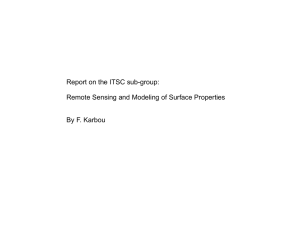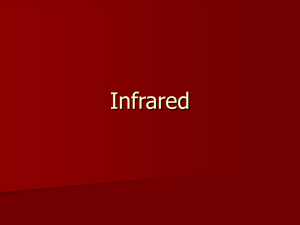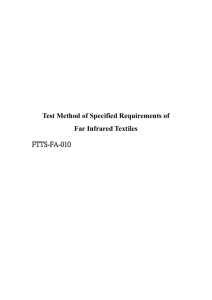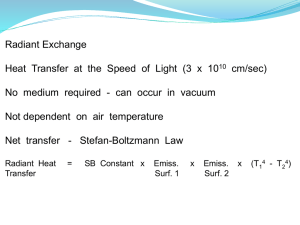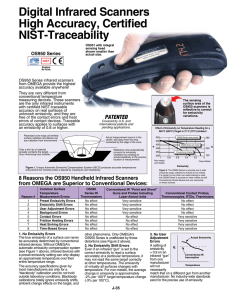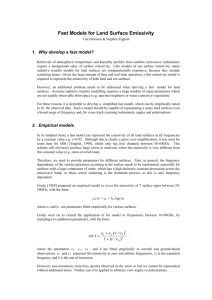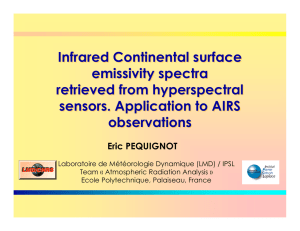J-Simple_Earth_Climate_Model_Take-Home_Experiment_Write
advertisement
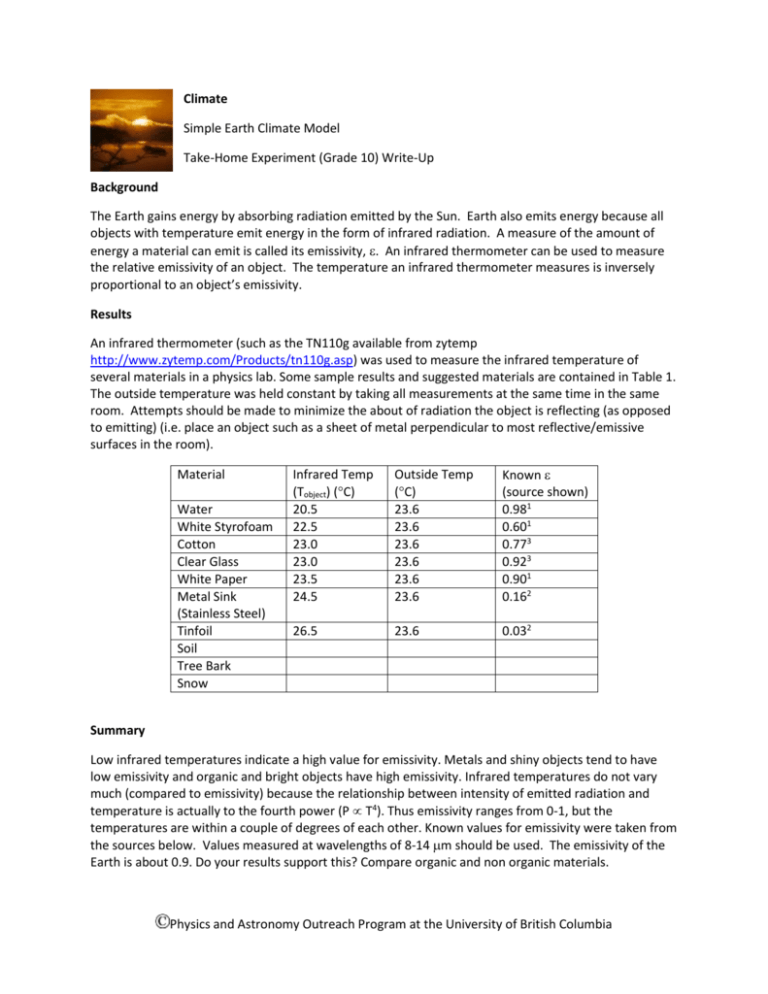
Climate Simple Earth Climate Model Take-Home Experiment (Grade 10) Write-Up Background The Earth gains energy by absorbing radiation emitted by the Sun. Earth also emits energy because all objects with temperature emit energy in the form of infrared radiation. A measure of the amount of energy a material can emit is called its emissivity, . An infrared thermometer can be used to measure the relative emissivity of an object. The temperature an infrared thermometer measures is inversely proportional to an object’s emissivity. Results An infrared thermometer (such as the TN110g available from zytemp http://www.zytemp.com/Products/tn110g.asp) was used to measure the infrared temperature of several materials in a physics lab. Some sample results and suggested materials are contained in Table 1. The outside temperature was held constant by taking all measurements at the same time in the same room. Attempts should be made to minimize the about of radiation the object is reflecting (as opposed to emitting) (i.e. place an object such as a sheet of metal perpendicular to most reflective/emissive surfaces in the room). Material Water White Styrofoam Cotton Clear Glass White Paper Metal Sink (Stainless Steel) Tinfoil Soil Tree Bark Snow Infrared Temp (Tobject) (C) 20.5 22.5 23.0 23.0 23.5 24.5 Outside Temp (C) 23.6 23.6 23.6 23.6 23.6 23.6 Known (source shown) 0.981 0.601 0.773 0.923 0.901 0.162 26.5 23.6 0.032 Summary Low infrared temperatures indicate a high value for emissivity. Metals and shiny objects tend to have low emissivity and organic and bright objects have high emissivity. Infrared temperatures do not vary much (compared to emissivity) because the relationship between intensity of emitted radiation and temperature is actually to the fourth power (P T4). Thus emissivity ranges from 0-1, but the temperatures are within a couple of degrees of each other. Known values for emissivity were taken from the sources below. Values measured at wavelengths of 8-14 m should be used. The emissivity of the Earth is about 0.9. Do your results support this? Compare organic and non organic materials. Physics and Astronomy Outreach Program at the University of British Columbia References 1 http://www.infrared-thermography.com/material-1.htm 2 http://www.infrared-thermography.com/material.htm 3 http://www.engineeringtoolbox.com/emissivity-coefficients-d_447.html Rachel Moll (2009-10-17) Physics and Astronomy Outreach Program at the University of British Columbia
